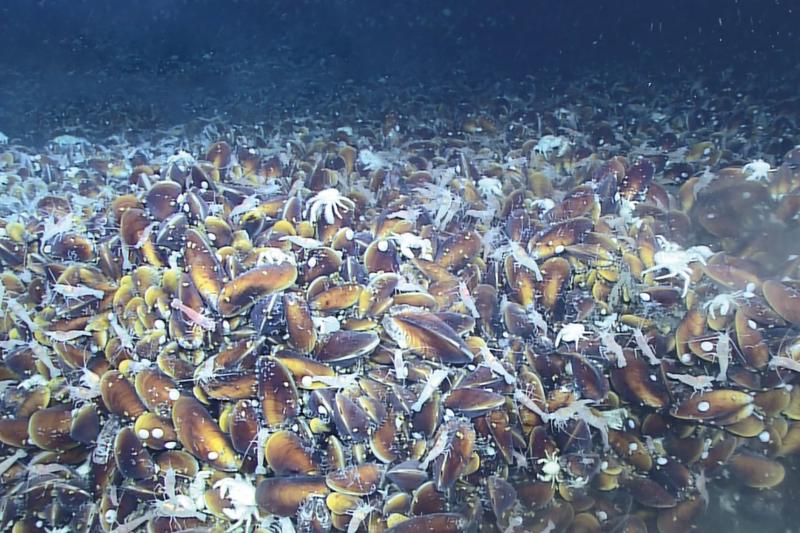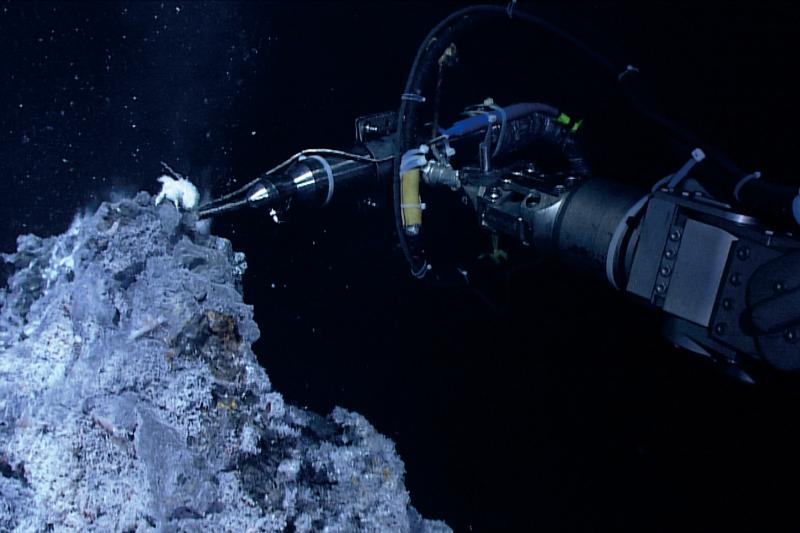IOCAS's Key Laboratory of Marine Geology and Environment has also studied the role of oceans in climate change, through a historic geologic lens. They were the first to demonstrate the role played by the weathering of tropical shelf sediments during glacial periods in the carbon cycle.
For the past 800,000 years, the high correlation between the Earth's CO2 concentration and the global climate during the glacial-interglacial periods demonstrates the role of greenhouse gases in regulating climate changes. But what drives the rapid drop of atmospheric CO2 concentration during ice ages has been long debated. The conventional wisdom emphasizes the influences of physical, chemical and biological processes of the ocean, while the effects of shelf weathering due to sea level changes are often overlooked, especially in the tropical Western Pacific.
Using findings from the Ocean Drilling Programme (ODP), IOCAS researchers showed that the volume of detritus in the South China Sea during the Quaternary glaciation is significantly larger than that during the interglacial period, suggesting enhanced silicate weathering of tropical shelf sediments. Further analysis revealed that the carbon consumption in this process contributed to approximately 9% of atmospheric CO2 reduction in the glacial period, indicating the significant role of shelf silicate weathering in the glacial-interglacial carbon cycles. This mechanism is further supported by evidence from the West Philippine Sea.
Inspired by the results, published in leading international journals, nearly 20 scientists from seven countries proposed collecting more evidence by drilling, further elucidating the role of shelf weathering in the global carbon cycle and climate change.
Marine geology research also enriches the understanding of geo-hazards, such as earthquakes and volcanic eruptions. These are often associated with subduction zones, regions of the Earth's crust where tectonic plates converge. Conditions controlling major earthquakes in these zones, and their relationship with slow earthquakes, in which energy is released over hours and months, have long occupied geoscientists, including researchers at IOCAS.
By comparing subduction zones with frequent large earthquakes, and those without, researchers found that, contrary to conventional understanding, weaker subduction faults, with low frictional strength, are more likely to produce large earthquakes. The strength of megathrust is determined by the ruggedness of the subduction seafloor, with smoother seafloor leading to weaker faults.
Further research on fault zone rheology to explore the role of temperature and fluids on subduction zone earthquakes, revealed that subduction faults have two separate friction regions, corresponding to the seismic zone and the slow slip zone, respectively. These results, published in Nature and Science, shed light on the prevention and mitigation of earthquakes and tsunamis.
Studies on hydrothermal activities are fuelled by new investigation methods and detection technologies developed at the key laboratory to explore the underlying geological processes and their effects on resources and the environment. IOCAS researchers have established a 'two-stage, six-process' model for investigating submarine hydrothermal activities, leading to the discovery of a new hydrothermal field called Tangyin.

Vent animals in the hydrothermal field. (Image by IOCAS)
By revealing the sources and controlling factors of hydrothermal products, particularly, sulphides, researchers constructed their formation process model, established new methods to calculate helium/heat ratio, isotopic composition of hydrothermal sulphides, and their discrete degree and variation rate, helping to determine the origins of hydrothermal ore deposits. As the first to use organisms such as sea snail shells to glean information on hydrothermal activities, IOCAS researchers enabled a multi-dimensional explanation of how hydrothermal activities influence the seafloor geological environment, promoting the progress of submarine hydrothermal geology.

The Raman insertion probe system, developed at IOCAS, enables in situ detection of hydrothermal vent fluids. (Image by IOCAS)
New devices developed include the acoustic turbidity sensor, and hydrothermal plume detection equipment, offering useful tools for protecting the submarine hydrothermal environment. The laboratory has also developed in situ spectrum detection technology to explore the deep-sea extreme environment, informing understanding of the effects of hydrothermal vent fluids on the marine environment.
Their studies on the processes underlying sea ice reduction provide reference points for weather forecasts.

